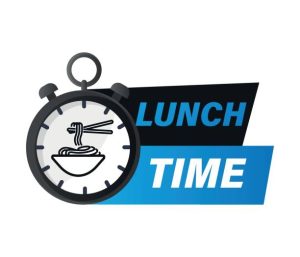
By Naomi Ayibaemi Frank-Opigo
With the passage of time, one begins to realise that since the days of backpack and lunchbox, We’ve been in a constant state of chaos! Years later, we’ve traded in 7–8-hour school days for 7–8-hour workdays and are now responsible members of society. We are responsible for meeting deadlines, hitting targets and making money, but what we sometimes forget is that we are responsible for taking breaks. This does not only apply to breaks that span over days to months; utilising breaks within the workday is crucial to effectiveness and sustainability. Switching off properly and taking useful breaks is a form of self-care.
Taking lunch breaks is more than just about time to eat; it’s about taking care of our mental health. Work is a major source of stress for many people, and managing this is the essence of prioritising mental health in the workplace. Good lunch break practices can play a role in reducing burnout and improving human resource sustainability.
How to know if you’re taking good breaks
Breaks have a purpose, a use: to help the body and mind recuperate from the preceding labour. A useful break does exactly that. Having useful breaks leaves one feeling refreshed and allows us to face the rest of the day with renewed energy and focus.
Checking in with yourself at the end of your lunch break can help you know if it was a good break or not.
Indicators of a good break include:
- You feel energised
Working drains energy. Adequate breaks are a necessary time for you to recharge and restore strength. A new leaf of optimism is not uncommon as you return to a hard task. - Your head is clear
Prolonged uninterrupted work eventually causes brain fog and diminishing returns. The point of taking a break is to clear the fog and regain focus.
By taking time to disconnect, breathe and recharge, you’re not only giving your body and mind the rest they need but also returning to work with greater focus and energy.
How to take a break
There are several things we can do. Here are some ideas to help you maximise your break:
- Refuel

Food and water are basic necessities of life for a reason. A light lunch and hydration provide the right balance of nourishment needed to get on with the day without a food-induced slumber.
- Move around

Leave your immediate environment. Take some air, touch grass and leave screens.
The change of environment can help you shed the work headspace. If your job is mostly done at your desk, this is an opportunity to introduce some movement into an otherwise sedentary day.
“The lunchbox is one thing that connects us” – From “The Lunchbox” by Ritesh Batra
Human interaction is vital, even for introverts. So, take these few minutes to participate in the world beyond the screen. Eating with work friends, a short conversation, a phone call with people you get along with, and some shared laughter are healthy and give us a sense of belonging. Being present in a moment of socialisation captures your attention and lets your mind dissociate from the work loop. When work resumes a few minutes later, the mind is rested.
- Task Switch
Sometimes, the best break is focusing on something else. Doing a daily crossword or logging in for a half hour (depending on how long your break is) of online gaming are just some examples of things that you can focus on intently for a short while to help take your mind off work and let your body recover properly during your break. This is an ideal technique for remote workers as it may be difficult to coordinate schedules for lunch with friends. Incorporating true rest into your lunch break is more than just stepping away from work, it’s an intentional act of self-care that can improve your mental health, productivity and overall well-being.
In a world where we’re constantly moving, prioritising these small moments of rest can have lasting benefits, allowing us to feel more centred and ready to face the challenges of the day. So, next time you pause for a break, make it a mindful break and watch as it transforms not only your workday but your mental health as well.
